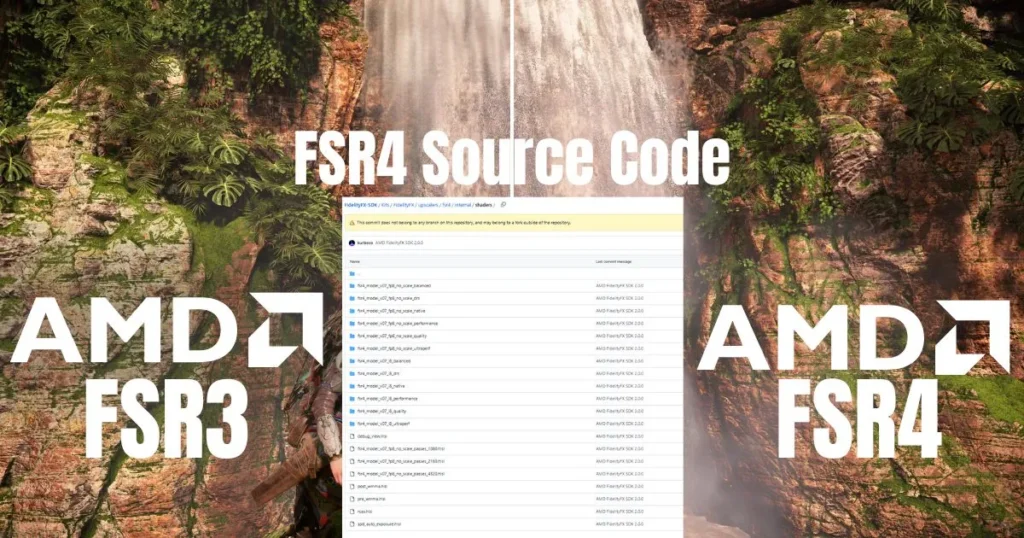The Accidental Open-Sourcing Heard Round the World
In a stunning development, AMD accidentally released the full source code for its unreleased FidelityFX Super Resolution 4 (FSR4) technology as part of the FidelityFX SDK 2.0 update. Although the company swiftly removed the repositories within hours, the code had already been downloaded, forked, and disseminated across the internet – all under the permissive MIT license that AMD may not be able to legally revoke.

What the Leaked Code Reveals
The inadvertently published code provides fascinating insights into AMD’s upcoming upscaling technology:
- INT8 Support: Evidence of work on an integer-based (INT8) version of FSR4, though apparently unfinished
- RDNA3 Optimization: Code references suggesting optimization for current-generation RDNA3 architecture
- Uncertain Status: It’s unclear whether these features were intended for shipping hardware or represent abandoned experiments
The leak confirms AMD has been actively developing FSR4, though the company had never officially announced it or committed to open-sourcing it like previous versions.
Why the MIT License Might Be Permanent
Legal experts emphasize a critical reality of open-source licensing:
So, I just got an update from @AMD and @GPUOpen about the FSR4 situation that occurred yesterday (8/20/25) with FSR4's Github repo debacle…
— Cheese (@System360Cheese) August 21, 2025
AMD's Official Statement:
Some of our development code was posted on GPUOpen GitHub in error. It has since been taken down.
“If users downloaded the files from a repository under the MIT license, they received permission at that time to use, copy, and modify them. Deleting the files later does not cancel the license already granted.”
The only potential exception would be if AMD didn’t own the rights to the code – which isn’t the case here. This means the FSR4 code, once released under MIT terms, may remain open-source in perpetuity regardless of AMD’s intentions.
Industry Implications: The Open-Source Divide
This accident highlights the different approaches to upscaling technology:
| Technology | Open-Source Status | Philosophy |
|---|---|---|
| AMD FSR 1-3 | Fully open-source | Community-driven development |
| NVIDIA DLSS | Closed source | Proprietary advantage |
| Intel XeSS | Promised open-source (unfulfilled) | Middle ground |
AMD now faces a dilemma: embrace the accidental openness or attempt to limit damage to their competitive position.
What’s Next for AMD and FSR4
The company has several options:
- Embrace the Accident: Officially release FSR4 as open-source and gain community goodwill
- Legal Challenges: Attempt to assert copyright claims (unlikely to succeed)
- Pivot Strategy: Accelerate development of FSR5 while downplaying FSR4
- Intel Approach: Promise future open-source releases while keeping current tech proprietary
Also, Read
- AMD FSR4 Source Code Accidentally Leaked – Then Pulled in SDK 2.0 Shakeup
- Intel Unlocks Hidden AI Power – Core Ultra Gains Custom GPU Memory Control
- MSI Claw 8 AI+ Gains Up to 30% Performance in Surprise Software Update
Key Takeaways
- Irreversible Action: Open-source licenses generally cannot be revoked once granted
- Competitive Implications: NVIDIA’s DLSS remains proprietary while AMD’s tech becomes more accessible
- Developer Opportunity: Game developers can now experiment with next-gen upscaling early
- Legal Uncertainty: Those using the code should consult counsel given the unusual circumstances
AMD has not yet made an official statement beyond removing the repositories. FSR4 was expected to compete with NVIDIA’s DLSS 4 technology.
Source: AMD FSR4 Codes, Cheese